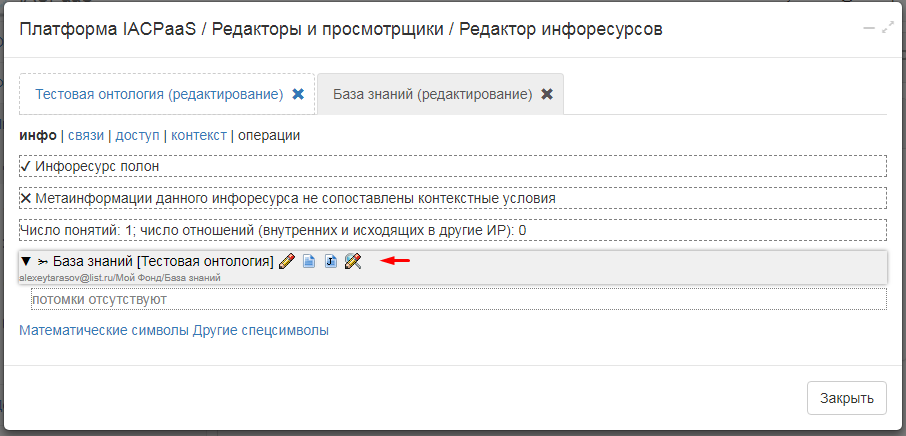- Knowledge Base Development - 1: Creating Ontologies and Knowledge Bases
- Knowledge Base Development - 2: Filling Ontologies and Knowledge Bases
- Knowledge Base Development - 3: Type of Outgoing Concepts' Set
- Knowledge Base Development - 4: Specifier Types
- Knowledge Base Development - 5: Constraint Types
- Knowledge Base Development - 6: Creating References and Clones
Filling Ontologies and Knowledge Bases
After the ontology was created, you can begin to fill it.
Ontology describes sets of concepts that can be added to the knowledge base, their types, constraints, and relationships.
Ontology (or metainformation) defines the structure of information (a document or a fragment of a domain), i.e. describes concepts with their interrelationships, which will be needed to compile a document or form knowledge of the subject area: sets of concepts, their types, constraints and interrelations. For this, the resource information editor (metainformation) is provided.
The ontology is formed step by step from more general concepts of the subject domain to more concrete ones (as an oriented graph with nodes and loops). In other words, in each concept of ontology, a set of lower-level concepts (hierarchies) can be nested. For each concept of such an ontology, one or more concepts in the knowledge base can be generated.
To begin editing, you must select an ontology or knowledge base in the "My Fund" section.

By default, each ontology or knowledge base begins with the root concept. All other concepts of an ontology or knowledge base are its descendants at one or another level of nesting. In the editor you can switch between viewing and editing modes as well as export ontologies and databases into text format (TPIR format), while knowledge bases can be exported into JSON format.


